AfterDark
Contributor
After reading the whole thread the OP got some great advice and ideas. I'll add to the kick counting method pace beads. I use them on land and underwater.
Pace beads are a string made into a loop with 2 sets beads on it separated by a knot and a knot on one end. On one set of 9 beads count a set of kicks the number is up to you, say 10 for each bead, so every 10 kicks pull 1 of the 9 beads down, count 10 more kicks repeat with another bead….. The second set of beads consists of 4 larger diameter beads each bead is the tenth bead of your set of 100 kicks and marks 100 kicks. After pulling the 9th bead down pull a larger bead down completing one cycle of 100 kicks. After using all the beads record total kicks on your slate slide them back up and continue. This method makes remembering kicks easier and errors smaller.
Pace Bead credit to the US Army Rangers. Underwater adaptation AfterDark
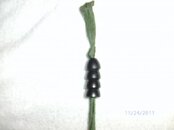
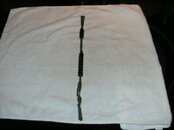
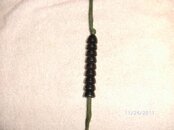
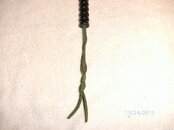
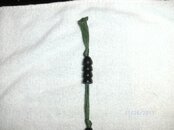
I use an old Scubapro LS1 compass mounted on my console, never a problem as someone posted operator error not an equipment issue.
All the visual, depth advice is a big part of getting back to where you started, also you can incorporate tide change times and the direction of the current into your dive plan. Time can be judged by tidal changes and the current will also have an effect on your tracking and direction, better to work with these forces than against them.... practice.. practice..practice.
Pace beads are a string made into a loop with 2 sets beads on it separated by a knot and a knot on one end. On one set of 9 beads count a set of kicks the number is up to you, say 10 for each bead, so every 10 kicks pull 1 of the 9 beads down, count 10 more kicks repeat with another bead….. The second set of beads consists of 4 larger diameter beads each bead is the tenth bead of your set of 100 kicks and marks 100 kicks. After pulling the 9th bead down pull a larger bead down completing one cycle of 100 kicks. After using all the beads record total kicks on your slate slide them back up and continue. This method makes remembering kicks easier and errors smaller.
Pace Bead credit to the US Army Rangers. Underwater adaptation AfterDark





I use an old Scubapro LS1 compass mounted on my console, never a problem as someone posted operator error not an equipment issue.
All the visual, depth advice is a big part of getting back to where you started, also you can incorporate tide change times and the direction of the current into your dive plan. Time can be judged by tidal changes and the current will also have an effect on your tracking and direction, better to work with these forces than against them.... practice.. practice..practice.
Last edited:



